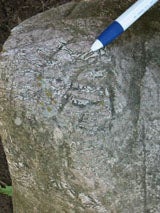
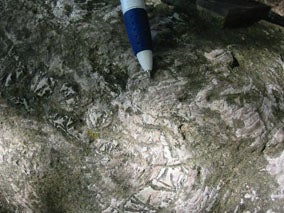
Stromatolite marble, sedimentary rock, Eagle Head Lake, Thunder Bay, Ontario. Stromatolite marble is formed as layers by cyanobacteria or algae. It formed in a quite area of a salt sea. The layers formed as sediment collected on the sticky mat of cyanobacteria. Similar structures are forming today in the sea off northern Australia and in the springs such as those found in Yellowstone National Park. This marble takes a good polish and could be used as a decorative stone.

Stromatolite from Thunder Bay. Wayne DeBrusk of Shuniah Twp. near Thunder Bay has donated a wonderful example of stromatolitic limestone, originally from the Eaglehead Lake area north of Thunder Bay. This one was found in a gravel pit. Strom as Wayne calls it is installed in our rock garden.
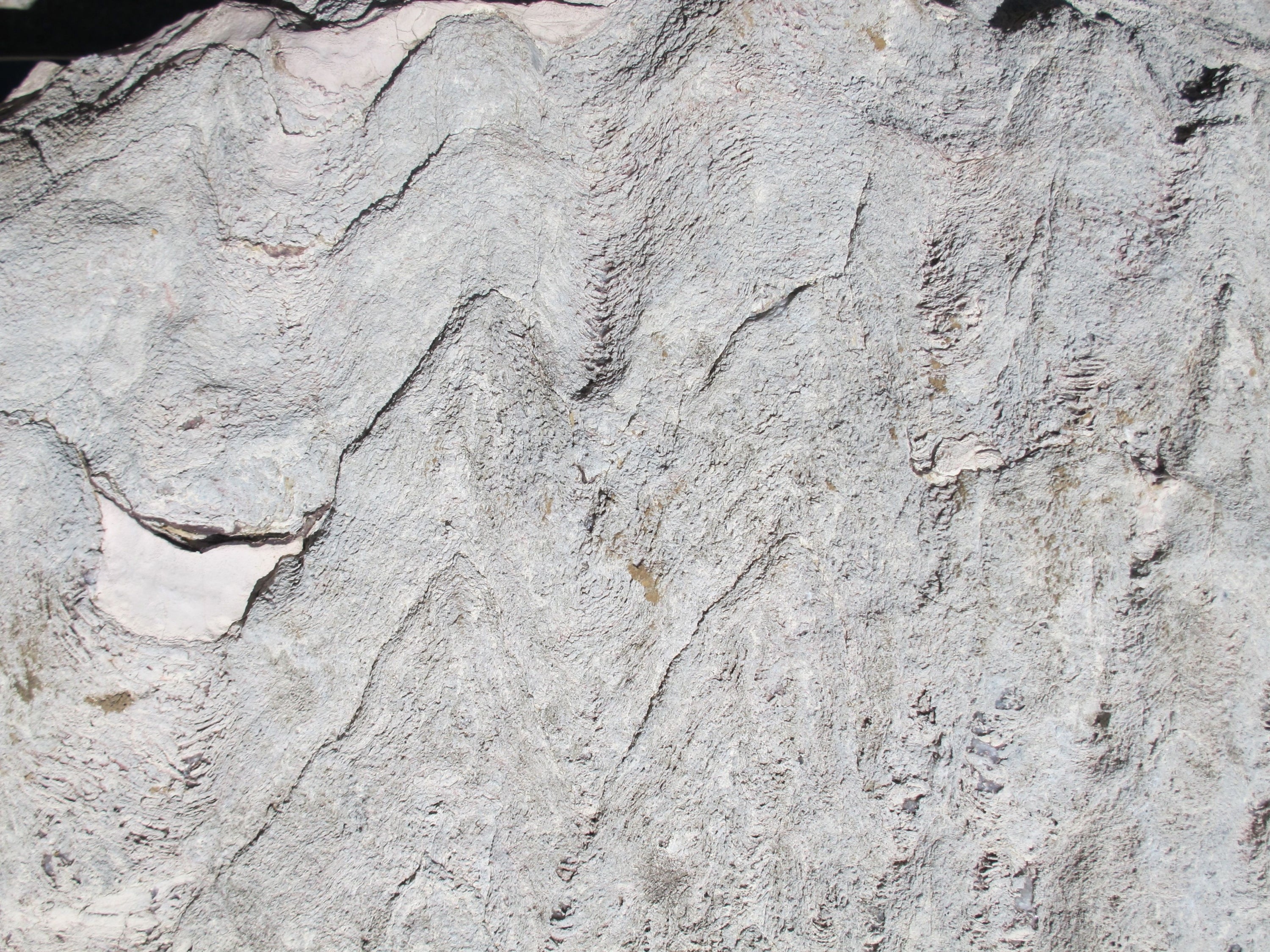
Close up of the stromatolites showing the cone-shaped growth lines of the cyanobacteria which gradually built the rock in a quiet part of the sea away from wave action. As found in Shark Bay, Australia today.
Strom's Story
This boulder was found in an aggregate quarry in MacGregor Township, north of Thunder Bay, Ontario. It was glacially transported to the location where it was found during the last Ice Age, possibly originating from a site, near Eaglehead Lake, 70 km north of Thunder Bay. It was donated to the Peter Russell Rock Garden by Wayne, Chris and Cori Debrusk, in memory of Sybil Debrusk.
The laminated form results from the presence of stromatolites, which are structures produced by the trapping, binding, and/or precipitation of sediment by the activity and growth of micro organisms in water. These fossilized, microscopic organisms, similar to modern blue-green algae, flourished in shallow, warm water near the shoreline. They trapped sediment on their sticky surfaces as they grew, building layer upon layer.
Lime-rich sedimentary rocks, sandstones, siltstones and mudstones of the Sibley Group (yellow on the geology map) formed in a large lake that extended from the Armstrong area to present-day Lake Superior in Precambrian times, about 1.5 billion years ago. Stromatolites occur mostly in the Middlebrun Bay Member of the Sibley Group. These rocks were metamorphosed by the intrusion of hot magma about 1.1 billion years ago.
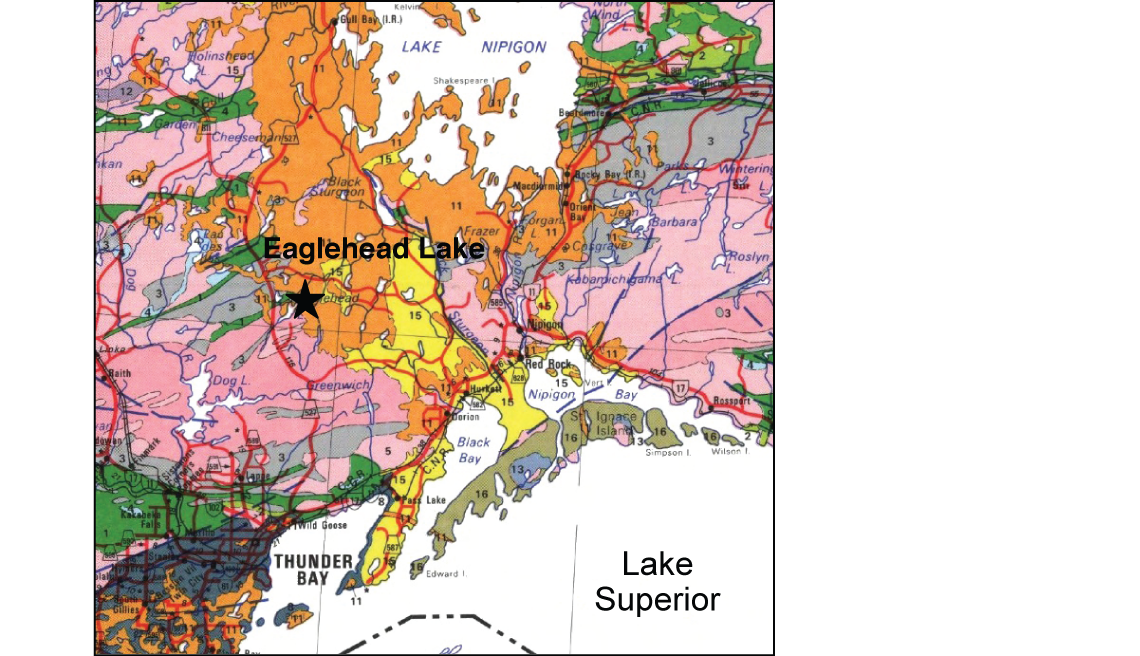
Geological map of the area northwest of Lake Superior. From the Ontario Ministry of Northern Development, Mines and Forestry.
Stromatolites are found in similar environments today, such as Shark Bay, Western Australia (see photograph).

Stromatolites in Shark Bay, Western Australia. From viajejet.com
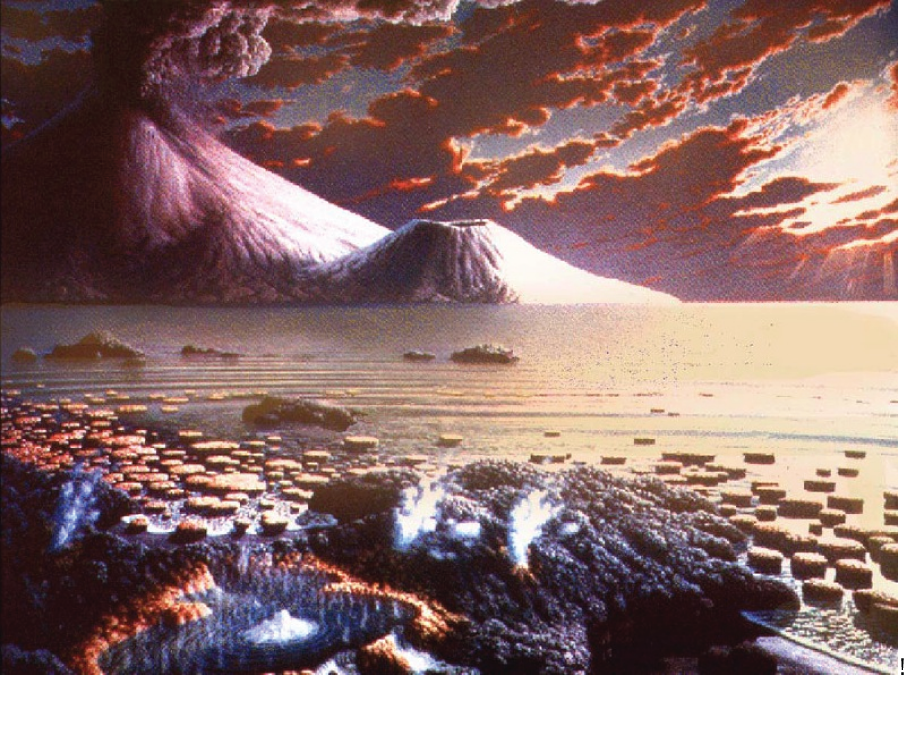
Artist’s conception of what Lake Superior might have looked like billions of years ago. Note the knob-like stromatolites along the shore. From www.agatelady.com.
This particular stromatolite, belonging to the genus Conophyton, displays a characteristic conical pattern in its laminae. Imagine these stromatolites growing, points upward, like a stack of upside-down ice-cream cones.
Organisms like these, often found preserved in rocks up to three billion years old in northwestern Ontario, were the starting point for biologic evolution and were instrumental in producing an oxygenated atmosphere through photosynthesis.
Donated by Wayne, Chris (alumnus, B. Sc., B. A. 1994) and Cori Debrusk, in loving memory of my wife and our mother, Sybil Debrusk. A “rare earth” woman, loved and cherished by so many.